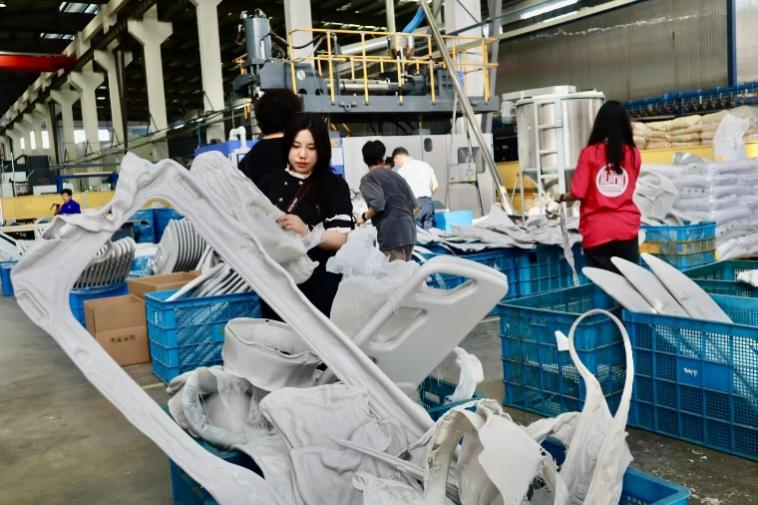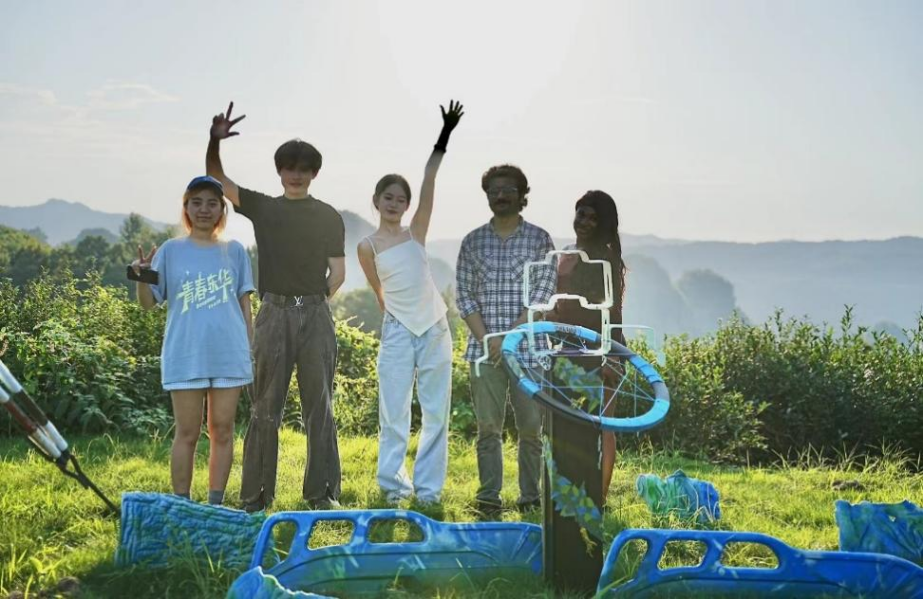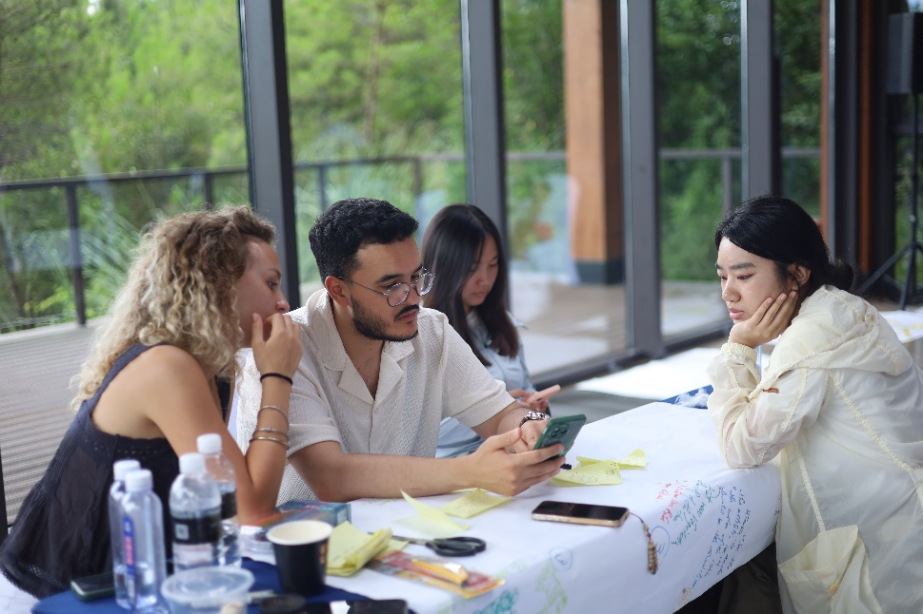Recently, 22 students from our Shanghai International College of Fashion and Innovation (SCF) teamed up with 19 international students from 13 countries, including Poland, Italy, the UK, and Pakistan, to form a social practice team. They traveled to Xinchang County, Zhejiang Province, to participate in the 2024"China-Foreign University Students Social Practice Week," themed "Ecology and Nature - Solutions to Sustainable Fashion and Intangible Cultural Heritage".Through eight works of art, teachers and students at home and abroadshowcase theirreflections on ecological civilization, ruralrevitalization, the integrated development of the Yangtze River Delta, and harmony in diversity.
On their first day in Xinchang, students and teachers visited local businesses to experience the innovative achievements of Xinchang as a pilot area for high-quality development and common prosperity in Zhejiang. When discussing the creation of "The Disappearing Nineteenth Peak," Liu Tongxuan mentioned that it was inspired by those industrial waste. This piece of work highlighted the fusion of industry and nature, which advocated for companies to adhere to sustainable development principles. "These are waste materials, but we want to use our creativity and effort to transform them into valuable artwork," said Amin, a student from Pakistan.

(Students visiting enterprises to collect industrial waste that can be used in their design)
Over the four days, the students, led by international fashion industry experts and corporate mentors, traversed the mountains and streams of the Nineteen Peaks scenic area in Xinchang County, engaging in artistic design practices. In the secluded valleys beside the Nineteen Peaks, the students used their creativity to collect, disassemble, and clean up those abandoned products or materials, engaging in a low-cost land art practice. The discarded materials were given new life by the students' skillful hands. "Our work centers around the UN Sustainable Development Goals. We have created the image of the weather-beaten Earth by using disposable chopsticks, abandoned bedsheets, and fabric scraps, which showcases the shared efforts of people in environmental protection," said Celine from the UK, introducing their work "Rebirth".

(Students working together on land art in a farm)
This year marks the 75th anniversary of the establishment of China-Poland diplomatic relations. Nika, a Polish exchange student, said, "This activity has allowed me to understand China's efforts in ecological environmental protection and rural revitalization. I really like it here and I hope that I can learn more about Chinese culture." Their team's work "Symbiosis" used discarded materials to build a bird's nest, which means creating a shelter for animals by using waste materials, embodying the concept of "harmonious coexistence between man and nature."

(Students collaborating to explore sustainable design solutions)
"Practice is the best form of education. This cross-bordersocial practice activity allow teachers and students from home and abroad to embrace the nature. This time, they gathered together in Xinchang to createland art works around sustainable development. For international students,, they have also gained a more direct and profound understanding of the construction of a beautiful China during their journey," said Li Jun, Dean of SCF. He hopes that the students can use their design language to tell the stories of China's rural revitalization, ecological civilization, and the world's sustainable development.


